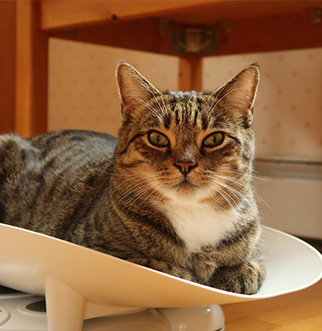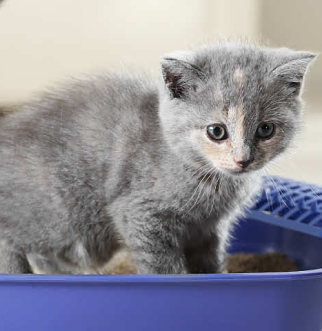
-
Find the right food for your pet
Take this quiz to see which food may be the best for your furry friend.
Find the right food for your pet
Take this quiz to see which food may be the best for your furry friend.
Featured products
 Small & Mini Savory Stew with Chicken & Vegetables Dog Food
Small & Mini Savory Stew with Chicken & Vegetables Dog FoodA delicious complement to the nutrition of Science Diet Small & Mini 7+ dog food
Shop Now Adult Healthy Cuisine Roasted Chicken, Carrots & Spinach Stew Dog Food
Adult Healthy Cuisine Roasted Chicken, Carrots & Spinach Stew Dog FoodDelicious roasted chicken paired with tender vegetables in a succulent stew
Shop Now Adult 7+ Perfect Digestion Chicken, Whole Oats & Brown Rice Recipe Dog Food
Adult 7+ Perfect Digestion Chicken, Whole Oats & Brown Rice Recipe Dog FoodScience Diet's breakthrough nutrition supports ultimate digestive well-being & healthy microbiome for dogs age 7+
Shop NowFeatured products
 Adult 7+ Tender Tuna Dinner Cat Food
Adult 7+ Tender Tuna Dinner Cat FoodWith delicious chunks in a decadent gravy
Shop Now Adult Savory Entrée Can Variety Pack Cat Food
Adult Savory Entrée Can Variety Pack Cat FoodPrecisely balanced nutrition with the delicious taste of savory minced chicken to help fuel the energy needs of cats during the prime of their life
Shop Now Adult 7+ Senior Vitality Chicken & Vegetable Stew Cat Food
Adult 7+ Senior Vitality Chicken & Vegetable Stew Cat FoodImproves Everyday Ability to Get Up & Go
Shop Now -
Dog
- Dog Tips & Articles
-
Health Category
- Weight
- Food & Environmental Sensitivities
- Urinary
- Digestive
- Joint
- Kidney
-
Life Stage
- Puppy Nutrition
- Adult Nutrition
- Senior Nutrition
Cat
- Cat Tips & Articles
-
Health Category
- Weight
- Skin & Food Sensitivities
- Urinary
- Digestive
- Kidney
-
Life Stage
- Kitten Nutrition
- Adult Nutrition
Featured articles
 Do Dogs and Cats have Belly Buttons?
Do Dogs and Cats have Belly Buttons?Learn whether cats & dogs have belly buttons like humans, what the function is, and if there are any health concerns associated with it.
Read More Why Are Dogs and Cats So Cute?
Why Are Dogs and Cats So Cute?If waggy puppy dog tails and furry kitten yawns make you swoon, you're not alone. Why are cats so cute? And, dogs too! Let's find out!
Read More Does My Pet Hate Me?
Does My Pet Hate Me?Learn tips for bonding with your pet if you've ever thought, 'My dog doesn't like me, or 'Why do I have a standoffish cat?'
Read More -


When learning how to train your cat, you'll start with very basic first steps that both reward good behavior and discourage the bad. But can you train a cat the same way you might train a dog? Yes and no. Because they're highly independent animals, cats might appear aloof or uninterested in following your commands. That doesn't mean you can't influence their behavior, though. If you're patient and consistent, your new kitten or older cat can be trained in no time.
What Do You Want to Train?
First, determine what you'd like your cat to learn, then move toward them in small ways each day. Before you start training your cat, however, consider what commands you'll use and what types of behavioral actions you want her to learn. Think about what you may have wondered in the past: how to train your cat to use a litter box, how to keep her calm on trips to the veterinarian's office, and the like. How can you teach her stop scratching your rugs or furniture? These are all options you can work on during training.
Some common objectives include:
- House training or litter training.
- Coming to you when you call or gesture.
- Staying calm and still for grooming.
- Interacting with you, other people, or other animals.
- Playing with toys, with you, or with another cat.
- Calm traveling (getting into carrier and riding in the car).
There are many important reasons to learn why and how to train your cat. But above all, teaching her to behave in certain ways will help her become social and content around humans and other animals. Training is also important for your own well-being; if your cat learns to be calm during nail-trimming or travel, there will be no anxiety for her or you. The better mannered your cat is, the better your relationship will be.
Keep Each 'Session' Short and Natural
Having determined which lessons you and your cat will master, it's time to get down to business. First and foremost, your cat's attention span is shorter than yours; you can't expect her to stay interested every time you're ready to be the trainer. Let the lesson dictate how long she's willing to be in your company.
Because some kittens take to potty training quickly (or even before coming home with you) after watching their mother use a litter box, this type of training time may be brief. However, you may still need to lead her back to the little box in the early stages to remind her where it is. If you're training your kitten to play with her toys (and you), however, the lessons might be more gradual. Cats often prefer to explore new toys on their own, which means your role should be to respect her space while remaining approachable during her exploration. Then once she's acquainted herself with a new item, you can participate.
Start Small
If you're excited about training, you may want to jump right in and teach your cat everything at once. To be successful, though, it's a better idea to practice one lesson at a time. Once your cat has mastered whatever you're working on, you can move on to the next training exercise. When bringing a new kitten home, for example, you may want to litter train her right away. Once you're done you can work on interacting with other pets, then calm grooming, and so on.
Don't Limit Her to One Area
Once your cat has learned a command, practice it in different areas of your home. If you're introducing a kitten to other preexisting pets, and only bring them together in the living room, she may believe the other animal only exists in that space. This isn't a problem if your other animal is a fish, but if your kitten is meeting a dog, she needs to understand she'll encounter him in other areas as well.
Much like litter training, some types of training may require using different areas of your home. If you are house training a cat, it's sometimes necessary to have more than one litter box available. Keeping her from scratching carpet and furniture will also warrant a more comprehensive lesson, as she'll find these items in more than one room.


Tasty Tips
Involve Other People

If the only two residents are you and your cat, you don't have to worry too much about involving others in the training process. Yet you still want your cat to learn to be social, not territorial. Shortly after bringing your cat home, invite friends or family members over to socialize with your new pet. Just remind them not to be too forward with their introduction. Just as you practice training in small spurts, you should allow your pet the same leeway.
If you're bringing a kitten into a larger family, it's even more important to involve everyone in the training process. There are many reasons why the entire family should get involved, but it's most important for consistency and relationship-building. After all, she'll see these familiar faces every day! Everyone should be clear on the training goals and which methods you'll employ to be successful.
Use A Reward System
Rewards to reinforce good behavior are great motivators, especially during training. There are two types of rewards for your furry new friend to test out. First, know she will enjoy any positive praise you have to share. Speak in a kind, upbeat voice and remind her how proud you are. Say, "What a good girl" and "good job!" while petting or scratching her fur so she knows these gestures mean well.
Cats also respond well to treats. Reward her with small kibbles of Science Diet® cat food when she correctly masters the commands you're working on. One way to do this is to use a "clicker" system. When your cat preforms the right behavior or action, sound a tool that clicks, and then give her a treat that signals a job well done. Hearing this noise each time she does a job well done will reinforce the good behavior you're training her to learn.
If It Isn't Working
Training doesn't happen overnight, and sometimes your cat will make a mistake. Can you train a cat to bounce back from it? Of course, but before you begin, you should come up with a plan for how to correct or guide her when she seems reluctant to catch on. Punishment doesn't work well when you're trying to train a kitten because your cat simply won't understand why she's in trouble. In fact, it could make her worse and feel more reclusive.
You'd never slap, shake, or physically correct your kitten during training, but don't forget to keep your voice just as calm. If your cat feels threatened by you, not only will training begin to fail, but she'll only learn to be afraid of you.
If you do need to redirect bad behavior (like scratching furniture) try making a quick, sharp noise. It'll also help if you say the same phrase every time, such as "Bam!" "Whoa!" or "Yow!" The point is to make your cat alert, and distract her from the current action or behavior. Avoid words that you regularly use, like "no!" or "hey!" as your cat will get confused when she hears it in a different context.
Learning how to train your cat can be a fun experience for your entire family. Just remember to be patient and positive, and you'll both get there.


Erin Ollila believes in the power of words and how a message can inform—and even transform—its intended audience. Her writing can be found all over the internet and in print, and includes interviews, ghostwriting, blog posts, and creative nonfiction. Erin is a geek for SEO and all things social media. She graduated from Fairfield University with an M.F.A. in Creative Writing. Reach out to her on Twitter @ReinventingErin or learn more about her at http://erinollila.com.
Related products
Related articles

What is the best food for an overweight cat? Learn all about weight control food for cats, including what's in it and how it works.

What is the best food for an overweight cat? Learn all about weight control food for cats, including what's in it and how it works.

How do you get a cat to lose weight? Learn all about cat foods for weight loss, including how to choose weight control cat food and exercise tips.

Cats are naturally very clean and chances are your kitten will already have learned how to use the litter box from her mother before she comes to live with you.

Put your cat on a diet without them knowing
Our low calorie formula helps you control your cat's weight. It's packed with high-quality protein for building lean muscles, and made with purposeful ingredients for a flavorful, nutritious meal. Clinically proven antioxidants, Vitamin C+E, help promote a healthy immune system.
Put your cat on a diet without them knowing
Our low calorie formula helps you control your cat's weight. It's packed with high-quality protein for building lean muscles, and made with purposeful ingredients for a flavorful, nutritious meal. Clinically proven antioxidants, Vitamin C+E, help promote a healthy immune system.

